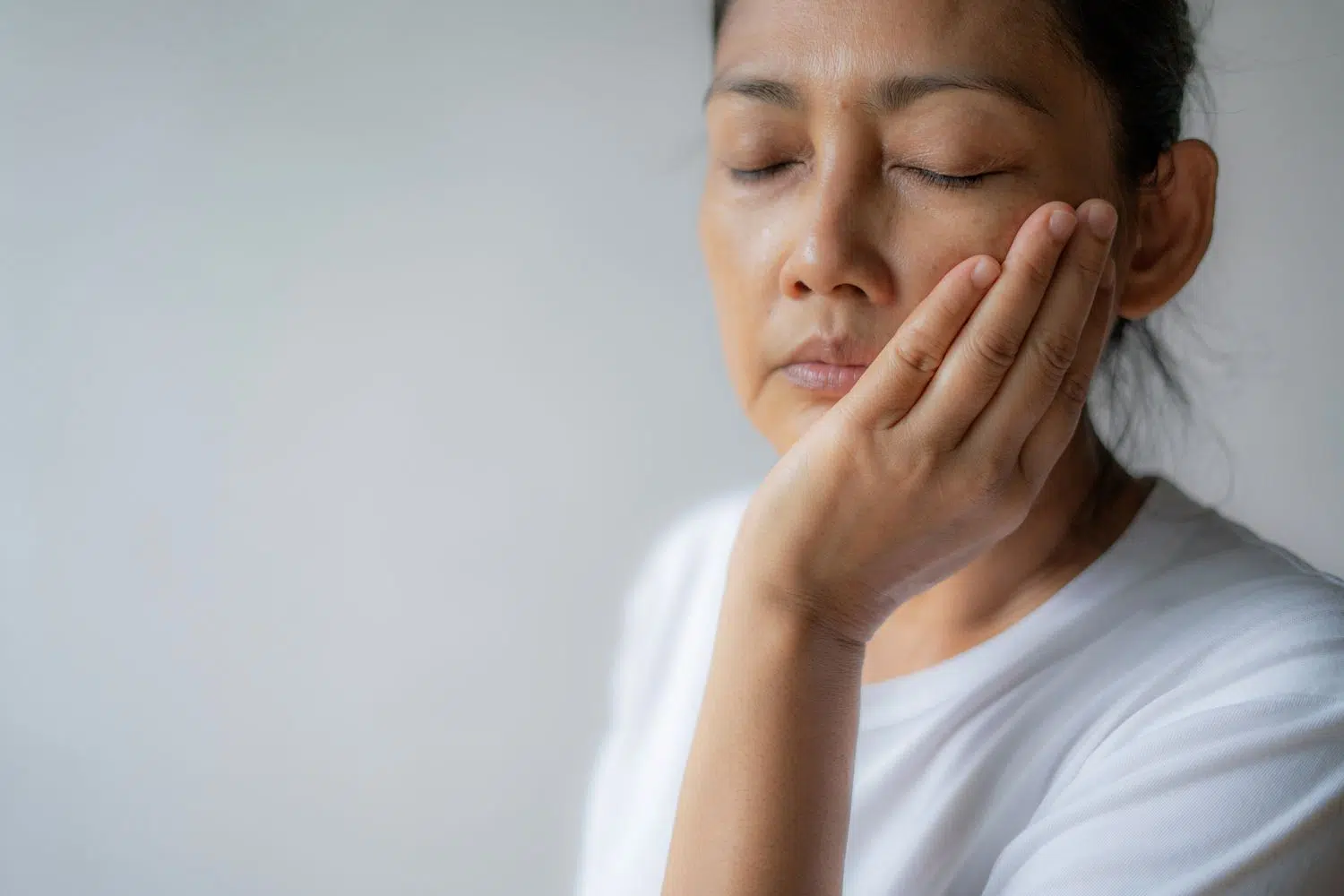Lockjaw: Why It Happens and How to Stop It


How to Stop Lockjaw
Symptoms
The defining symptom of lockjaw is only being able to open your mouth about 35 mm (1.4 inches)—that’s less than three fingers in width.
Lockjaw affects the whole jaw. The “locking” of the jaw is usually felt equally on both sides of the face. Lockjaw can come on suddenly, and the symptoms peak within a few hours.
Many nerves and muscles control the movement of your jaw. Lockjaw typically causes your jaw to be partially open because of where these nerves and muscles are located.
While not being able to open your mouth fully is the most common symptom of lockjaw, it’s not the only symptom. Lockjaw can last from several hours to a few days. Within just a few hours, lockjaw can also cause:
- Headaches
- Jaw pain
- Pain in the neck area
- Swelling of the jaw
- Earaches
- Muscle spasms
Causes
Lockjaw occurs because a muscle remains in its active position and cannot relax (spasm). The muscle spasm that occurs with lockjaw can be caused by many things.
For example, a spasm can happen when there is an injury to the muscle, nerve, bone, tendon, or ligament. It can also be related to health conditions, infections, and medications.
Treatment
Lockjaw can be treated with a combination of physical therapy, medication, and lifestyle changes.
Physical Therapy
Physical therapy is crucial in treating lockjaw, as it helps improve jaw flexibility and reduce stiffness. Doing exercises at home several times a day can gradually enhance jaw movement.
Medication
Oral and injected muscle relaxants are typically helpful for lockjaw.
Prevention
If you have experienced lockjaw, you are at risk for developing it again. It’s important to discuss prevention with your healthcare provider. Preventative strategies for lockjaw may include avoiding medications that trigger it, treating TMJ, or practicing jaw exercises.
Conclusion
Lockjaw is a condition where the muscles in the jaw affect its movement. The mouth is not able to open as widely as usual, which can affect speech and swallowing. Treatment for lockjaw is aimed at relaxing the muscles and getting them moving normally again, as well as addressing the root cause. Physical therapy, at-home exercises, and medication are common components of a treatment plan for lockjaw.
Frequently Asked Questions
- What is lockjaw?
Lockjaw, also known as trismus, is a condition where the muscles in the jaw affect its movement. - What are the symptoms of lockjaw?
The symptoms of lockjaw include being able to open your mouth only a short distance, headaches, jaw pain, and muscle spasms. - What causes lockjaw?
Lockjaw can be caused by a variety of factors, including temporomandibular joint disorders, oral infections, medications, and trauma. - How is lockjaw treated?
Lockjaw is typically treated with a combination of physical therapy, medication, and lifestyle changes.
Recent Posts
2025 China DMS Pro Bodybuilding Show Results
2025 China DMS Pro Results Twenty-five pro bodybuilders took to the stage at the 2025…
Why Salmon Sperm Facials Are the Newest Anti-Aging Skin Care Trend
What Are the Ingredients? A salmon sperm facial is also known as a PDRN treatment.…
Autistic Stimming Explained – and Why Stopping It Can Lead to Burnout
Stimming: A Self-Soothing Strategy for Autistic People What is Stimming? Stimming – short for “self-stimulatory…
Menthol Cigarettes to be Banned from April 1
New Laws to Regulate Tobacco Products in Australia New laws come into effect in Australia…
Hiking with Plantar Fasciitis Doesn’t Have to Hurt—These Boots Prove It
Best Hiking Boots for Plantar Fasciitis Designed to withstand the year-round elements of the Pacific…
Do You Burn More Calories on Your Period?
Metabolism During Your Period While your menstrual cycle triggers many physical and emotional changes, there…


